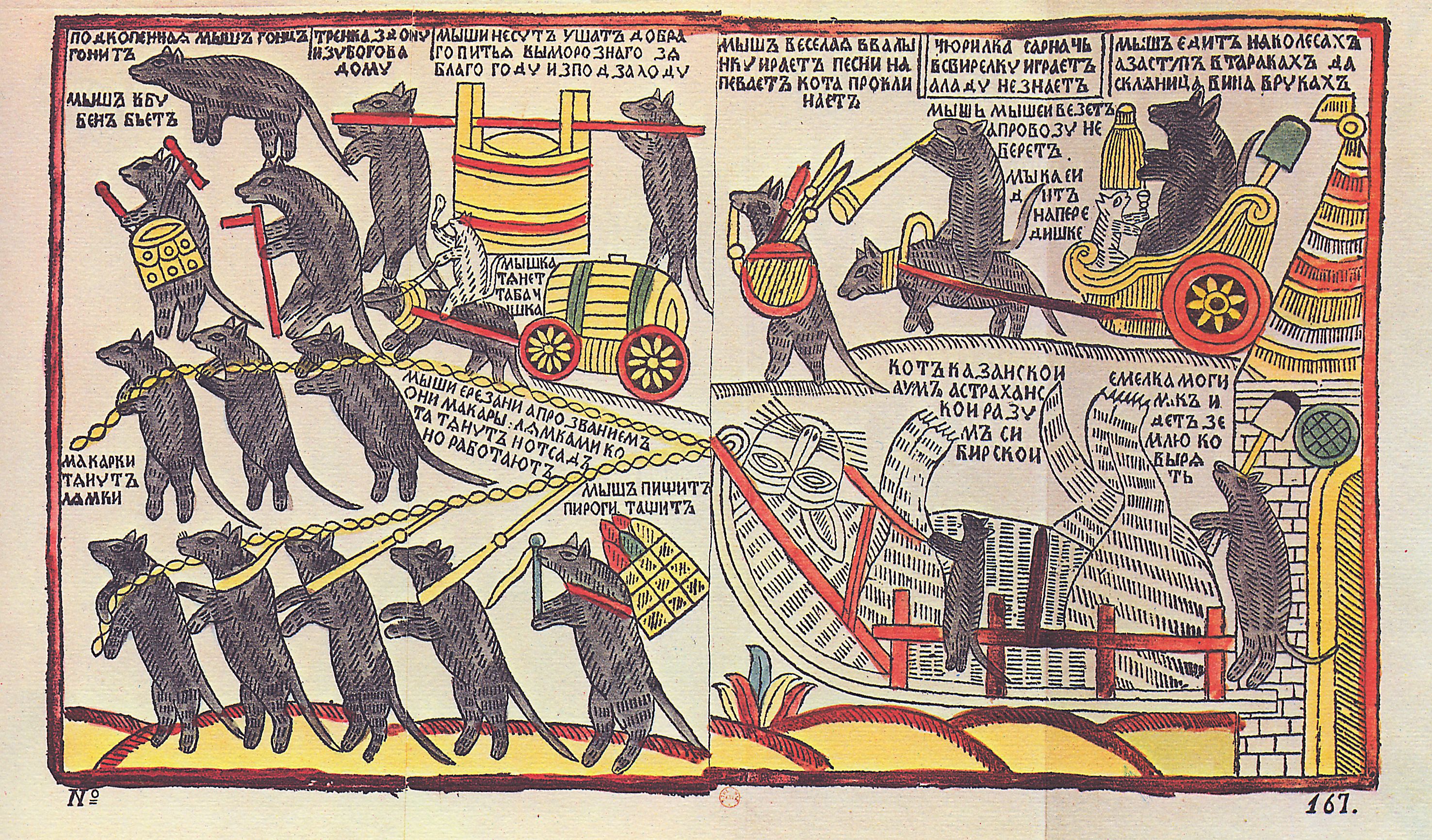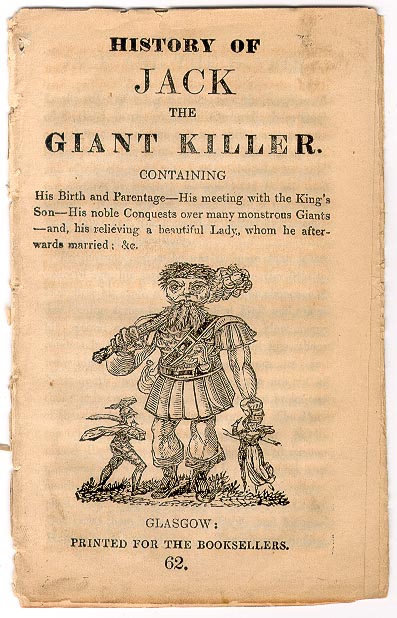|
Lubok
A ''lubok'' (plural ''lubki''; ) is a Russian popular print, characterized by simple graphics and narratives derived from literature, religious stories, and popular tales. ''Lubki'' prints were used as decoration in houses and inns. Early examples from the late 17th and early 18th centuries were woodcuts, followed by engravings or etchings, and from mid-19th century lithography. They sometimes appeared in series, which might be regarded as predecessors of the modern comic strip. Cheap and simple books, similar to chapbooks, which mostly consisted of pictures, are called lubok literature (). Both pictures and literature are commonly referred to simply as ''lubki''. The Russian word ''lubok'' derives from ''lub'' - a special type of board (secondary phloem) on which pictures were printed. Background Russian ''lubki'' became a popular genre during the last half of the 17th century.Dianne Ecklund Farrell, Farrell, Dianne Ecklund. "Medieval Popular Humor in Russian Eighteenth-Century ... [...More Info...] [...Related Items...] OR: [Wikipedia] [Google] [Baidu] |
Popular Print
Popular prints is a term for printing, printed images of generally low artistic quality which were sold cheaply in Europe and later the New World from the 15th to 18th centuries, often with text as well as images. They were some of the earliest examples of mass media. After about 1800, the types and quantity of images greatly increased, but other terms are usually used to categorise them. 15th century From about 1400, there began a "visual revolution that inundated Europe with images during the fifteenth century" (Field) as the woodcut technique was applied to paper, which was now manufactured in Christian Europe, instead of being imported from Islamic Spain. In the 15th century, the great majority of these images were religious, if playing cards are excluded. They were sold at churches, fairs and places of pilgrimage. Most were coloured, usually crudely, by hand or later by stencil. One political cartoon relating to events in 1468–1470 has survived in several different vers ... [...More Info...] [...Related Items...] OR: [Wikipedia] [Google] [Baidu] |
Chapbook
A chapbook is a type of small printed booklet that was a popular medium for street literature throughout early modern Europe. Chapbooks were usually produced cheaply, illustrated with crude woodcuts and printed on a single sheet folded into 8, 12, 16, or 24 pages, sometimes bound with a saddle stitch. Printers provided chapbooks on credit to chapmen, who sold them both from door to door and at markets and fairs, then paying for the stock they sold. The tradition of chapbooks emerged during the 16th century as printed books were becoming affordable, with the medium ultimately reaching its height of popularity during the 17th and 18th centuries. Various ephemera and popular or folk literature were published as chapbooks, such as almanacs, children's literature, folklore, ballads, nursery rhymes, pamphlets, poetry, and political and religious Tract (literature), tracts. The term ''chapbook'' remains in use by publishers to refer to short, inexpensive booklets. Terminology ''Chapbook ... [...More Info...] [...Related Items...] OR: [Wikipedia] [Google] [Baidu] |
Woodcut
Woodcut is a relief printing technique in printmaking. An artist carves an image into the surface of a block of wood—typically with gouges—leaving the printing parts level with the surface while removing the non-printing parts. Areas that the artist cuts away carry no ink, while characters or images at surface level carry the ink to produce the print. The block is cut along the wood grain (unlike wood engraving, where the block is cut in the end-grain). The surface is covered with ink by rolling over the surface with an ink-covered roller ( brayer), leaving ink upon the flat surface but not in the non-printing areas. Multiple colours can be printed by keying the paper to a frame around the woodblocks (using a different block for each colour). The art of carving the woodcut can be called ''xylography'', but this is rarely used in English for images alone, although that term and ''xylographic'' are used in connection with block books, which are small books containing text ... [...More Info...] [...Related Items...] OR: [Wikipedia] [Google] [Baidu] |
Tempera
Tempera (), also known as egg tempera, is a permanent, fast-drying painting medium consisting of pigments mixed with a water-soluble binder medium, usually glutinous material such as egg yolk. ''Tempera'' also refers to the paintings done in this medium. Tempera paintings are very long-lasting, and examples from the first century AD still exist. Egg tempera was a primary method of painting until after 1500 when it was superseded by oil painting. A paint consisting of pigment and binder commonly used in the United States as poster paint is also often referred to as "tempera paint", although the binders in this paint are different from traditional tempera paint. Etymology The term ''tempera'' is derived from the Italian ''dipingere a tempera'' ("paint in distemper"), from the Late Latin ''distemperare'' ("mix thoroughly"). History Tempera painting has been found on early Egyptian sarcophagus decorations. Many of the Fayum mummy portraits use tempera, sometimes in comb ... [...More Info...] [...Related Items...] OR: [Wikipedia] [Google] [Baidu] |
Alexander Boguslavsky
Alexander () is a male name of Greek origin. The most prominent bearer of the name is Alexander the Great, the king of the Ancient Greek kingdom of Macedonia who created one of the largest empires in ancient history. Variants listed here are Aleksandar, Aleksander, Oleksandr, Oleksander, Aleksandr, and Alekzandr. Related names and diminutives include Iskandar, Alec, Alek, Alex, Alexsander, Alexandre, Aleks, Aleksa, Aleksandre, Alejandro, Alessandro, Alasdair, Sasha, Sandy, Sandro, Sikandar, Skander, Sander and Xander; feminine forms include Alexandra, Alexandria, and Sasha. Etymology The name ''Alexander'' originates from the (; 'defending men' or 'protector of men'). It is a compound of the verb (; 'to ward off, avert, defend') and the noun (, genitive: , ; meaning 'man'). The earliest attested form of the name, is the Mycenaean Greek feminine anthroponym , , (/Alexandra/), written in the Linear B syllabic script. Alaksandu, alternatively called ''Alakasandu'' or ... [...More Info...] [...Related Items...] OR: [Wikipedia] [Google] [Baidu] |
Dmitry Rovinsky
Dmitry Aleksandrovich Rovinsky (; - 23 June 1895) was an art historian and compiler of reference albums on Russian portraits and engravings of the 18th to 19th centuries. He was an honorary member of the Academy of Science and Academy of Arts. Biography Dmitry Aleksandrovich Rovinsky was born into the family of a Moscow policeman. After graduating from a law college he started his service in Moscow, taking various legal posts. From 1870 till the end of his life he served as the Senator of the Criminal Cassation Department. From the 1840s he took a great interest in collecting engravings, including the luboks. His fundamental works on the history of Russian gravure and lubok were the first ones of the kind. His historical and bibliographical treatises, rich in actual data were highly estimated by art critics and have kept up their significance till date. Being the publisher of his own works, Dmitry Rovinsky paid a great attention to polygraphic processes (was one of the first ... [...More Info...] [...Related Items...] OR: [Wikipedia] [Google] [Baidu] |
Gospel
Gospel originally meant the Christianity, Christian message ("the gospel"), but in the second century Anno domino, AD the term (, from which the English word originated as a calque) came to be used also for the books in which the message was reported. In this sense a gospel can be defined as a loose-knit, episodic narrative of the words and deeds of Jesus, culminating in trial of Jesus, his trial and crucifixion of Jesus, death, and concluding with various reports of his Post-resurrection appearances of Jesus, post-resurrection appearances. The Gospels are commonly seen as literature that is based on oral traditions, Christian preaching, and Old Testament exegesis with the consensus being that they are a variation of Greco-Roman biography; similar to other ancient works such as Xenophon's Memorabilia (Xenophon), ''Memoirs of Socrates''. They are meant to convince people that Jesus was a charismatic miracle-working holy man, providing examples for readers to emulate. As such ... [...More Info...] [...Related Items...] OR: [Wikipedia] [Google] [Baidu] |
Passion Of Christ
The Passion (from latin language, Latin , "to suffer, bear, endure") is the short final period before the death of Jesus in Christianity, Jesus, described in the four canonical gospels. It is commemorated in Christianity every year during Holy Week. The ''Passion'' may include, among other events, Jesus's triumphal entry into Jerusalem, his cleansing of the Temple, his anointing of Jesus, anointing, the Last Supper, his agony in the Garden, agony, his Arrest of Jesus, arrest, his trials Sanhedrin trial of Jesus, before the Sanhedrin and Pilate's court, before Pilate, his Crucifixion of Jesus, crucifixion and death, and his burial of Jesus, burial. Those parts of the four canonical Gospels that describe these events are known as the Passion narratives. In some Christian communities, commemoration of the Passion also includes remembrance of the sorrow of Mary, the mother of Jesus, on the Friday of Sorrows. The word ''passion'' has taken on a more general application and now may a ... [...More Info...] [...Related Items...] OR: [Wikipedia] [Google] [Baidu] |
Martyr
A martyr (, ''mártys'', 'witness' Word stem, stem , ''martyr-'') is someone who suffers persecution and death for advocating, renouncing, or refusing to renounce or advocate, a religious belief or other cause as demanded by an external party. In colloquial usage, the term can also refer to any person who suffers a significant consequence in protest or support of a cause. In the martyrdom narrative of the remembering community, this refusal to comply with the presented demands results in the punishment or execution of an individual by an oppressor. Accordingly, the status of the 'martyr' can be considered a posthumous title as a reward for those who are considered worthy of the concept of martyrdom by the living, regardless of any attempts by the deceased to control how they will be remembered in advance. Insofar, the martyr is a relational figure of a society's boundary work that is produced by collective memory. Originally applied only to those who suffered for their religious b ... [...More Info...] [...Related Items...] OR: [Wikipedia] [Google] [Baidu] |






